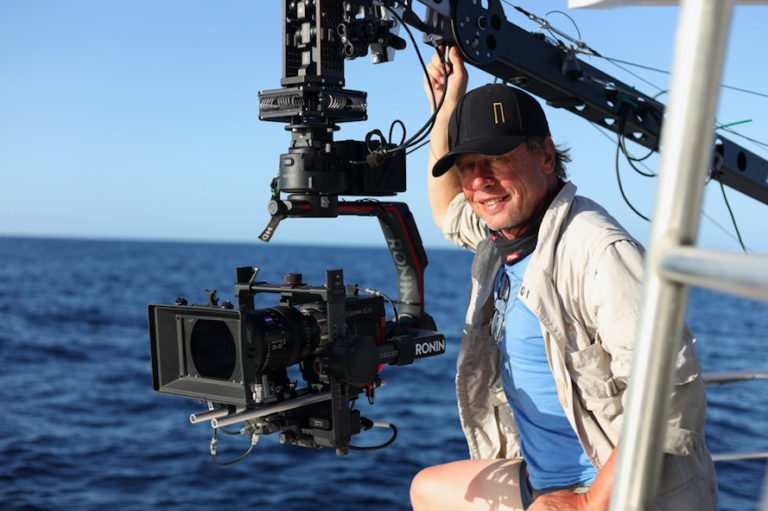
Wolfgang Knöpfler is an internationally experienced film producer, specialised in documentary filmmaking, who has worked across five continents, in over fifty countries from Afghanistan to Zimbabwe. Most of the projects he has been involved with were produced for major networks including National Geographic, WNET, PBS, Discovery, BBC and blue chip broadcasters in Germany, Austria, France and many other countries.
After living for fifteen years away from his home country — between the U.K., Namibia and Tanzania — Wolfgang Knöpfler was offered by Walter Köhler to join Terra Mater Factual Studios in his country of origin, Austria. Throughout his career Wolfgang has produced some of the most acclaimed natural history films that have gained recognition at the most prestigious film festivals around the globe.
The latest film he has produced is Patrick And The Whale, that portrays how marine videographer Patrick Dykstra explores the wondrous world of sperm whales and establishes a special friendship with them.
We met with Wolfgang Knöpfler at the 2022 Innsbruck Nature Film Festival, where he was a jury member for the short films and presented the feature documentary he produced as the festival’s Opening movie. The film was loved by audiences to the point that a second screening was organised. Furthermore, the jury for the feature films bestowed to Patrick And The Whale the Grand Prize for Best Nature Documentary.
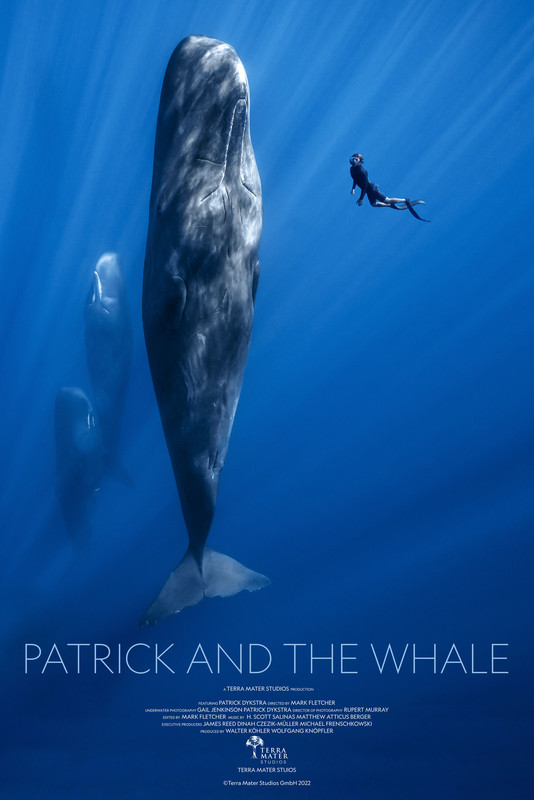
In this Exclusive Interview Wolfgang Knöpfler shares his experience as a producer for this mesmerising documentary:
Q: How did this film come into being?
W.K: A former junior researcher, with whom I worked in the early 2000s, sent me a ten minute piece showing Patrick and his first encounters with whales. He is James Reed, who won an Oscar for My Octopus Teacher. When I saw the footage I was mesmerised. I went to the young people of the company and showed it to them to see if they would have my same reaction and they were all enthusiastic about it. The same happened with management. When went out to Dominica it was the hell of a journey because we were in the middle of lockdown; we had three crews from England, France and Austria. Flights were being cancelled, we were trying to figure out how to get to destination and we finally made it there. We started filming after quarantine. I chose director Mark Fletcher because of his vision, he didn’t want to have a television format with interviews, and I liked his theatrical approach, I envisioned this film for the big screen. The only time we see Patrick’s reaction is when he’s in the boat and he nearly starts crying, which was actually shot by my son Justin Knöpfler. I trusted the director because he knows what he’s doing and he’s got the vibe.
Q: Dolores, Can Opener and her calf Hope all establish a friendship with Patrick through the years. There are several moments in the film where they seem to exceed humanity in their ability to connect, what great lesson do you think audiences can learn from these whales?
W.K: I think it’s all about listening and observing. Allowing the other to get used to you and doing it respectfully. It takes time to establish a connection. The same happens with us humans we don’t connect immediately and it probably comes easier with people who are not forcefully forthcoming, but are more reserved and have a tendency to listen.
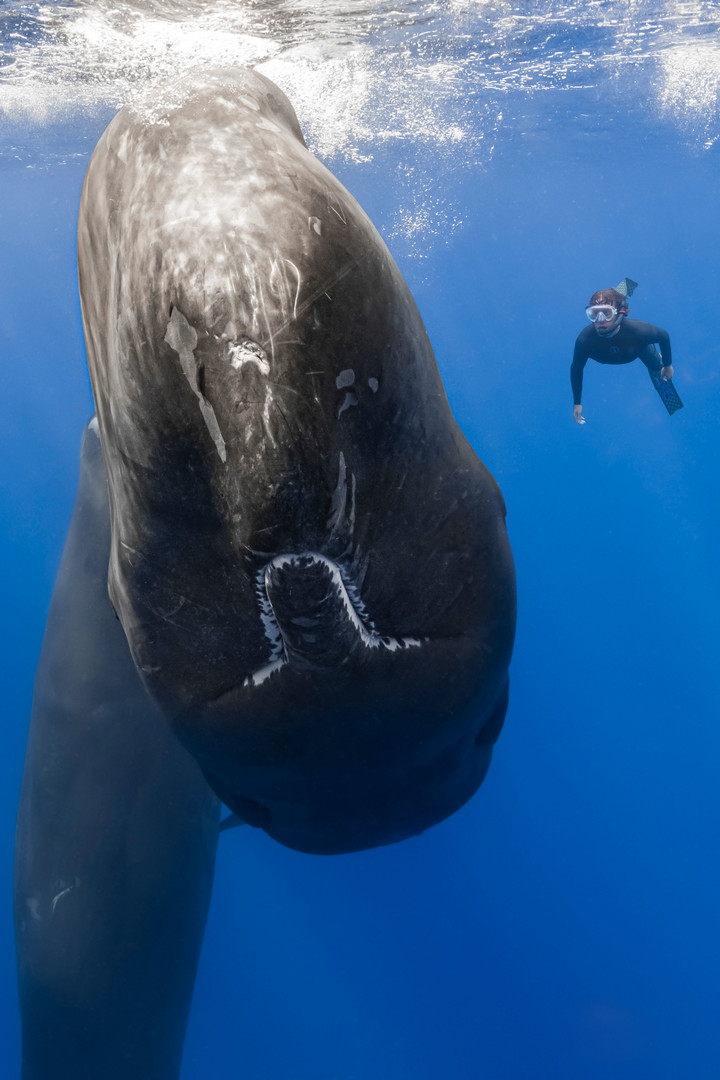
Q: What impressed you the most about the filming done by Patrick Dykstra and cinematographer Gail Jenkinson and the way they show how animals have a soul?
W.K: What I like about Patrick is his humbleness, determination and dedication. He doesn’t do anything halfheartedly, he is in it 100%. He is incredibly professional, as is Gail who swam for forty minutes with this massive camera. I strongly wanted her as DP and she was extraordinary in coming up with many ideas for underwater shots.
Q: Do you remember the first time you swam with a whale?
W.K: I remember it vividly and I will never forget it. In general us humans are very drawn to whales and dolphins. There’s a big difference when you are filming them from the boat as opposed to swimming with them. I remember Patrick and Gail were out filming Can Opener and the crew told me to get in the water, so I put on my flippers and snorkels and there was this juvenile sperm whale under the boat in this endless abyss of sun-kissed blue. It was such a magical moment. And by swimming with this whale you could perceive she completely understood you. It has nothing to do with eye contact, it’s so hard to describe, you can only experience it when you are in the water.
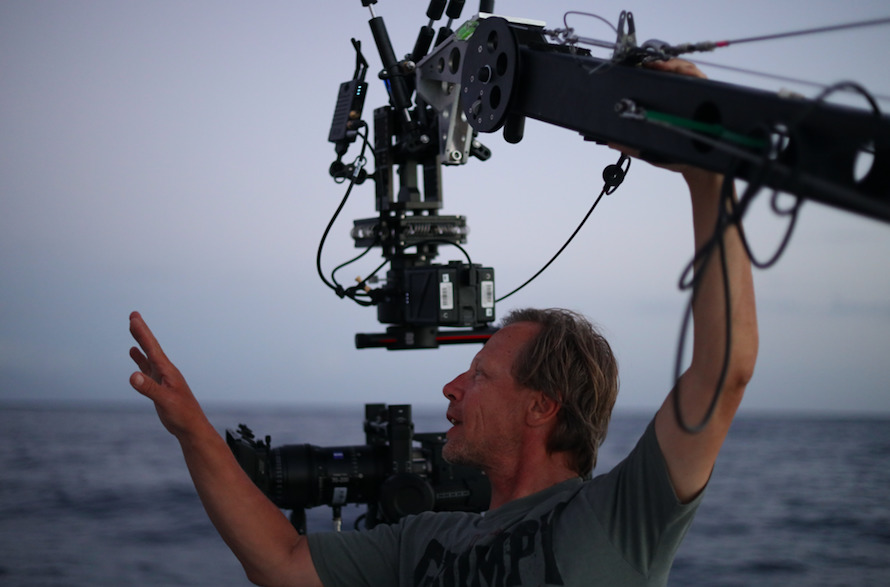
Q: In the last few years with My Octopus Teacher, Playing with Sharks: The Valerie Taylor Story and now Patrick And The Whale, there’s been an increase of films showing the empathetic rapport that humans can establish with marine creatures. Why do you think this bond fascinates us so much?
W.K: With whales we have some kind of unknown connection. We’ve had this wonderful naturalistic photography but it usually excluded humans. Now technology has become more accessible so it’s made it more possible to film underwater without it being horrendously expensive as it was ten years ago.
Q: In terms of storytelling, in the past fiction has demonised marine creatures, from Melville’s Moby Dick, to Spielberg’s Jaws, even the whale in Pinocchio. Now there is a tendency to revert the characterisation of these animals, do you think it’s a way of righting wrongs towards these aquatic beings?
W.K: Absolutely. In fact, I can give you an example of this in the film industry. The first natural history film I did was in 1998 with Sir David Attenborough, about giant honey bees in North East India, funded by ORF, ZDF and National Geographic. The title for the film chosen for Austria was The Magic Trees of Assam, in Germany it was called The Bee Trees of Assam, and on National Geographic it was The Killer Bees of India. This shows the cultural difference in wanting to tell a story just from the title and it gives a wrong image of nature. We don’t need to use sensationalism to tell a story and now we are definitely trying to right wrongs.
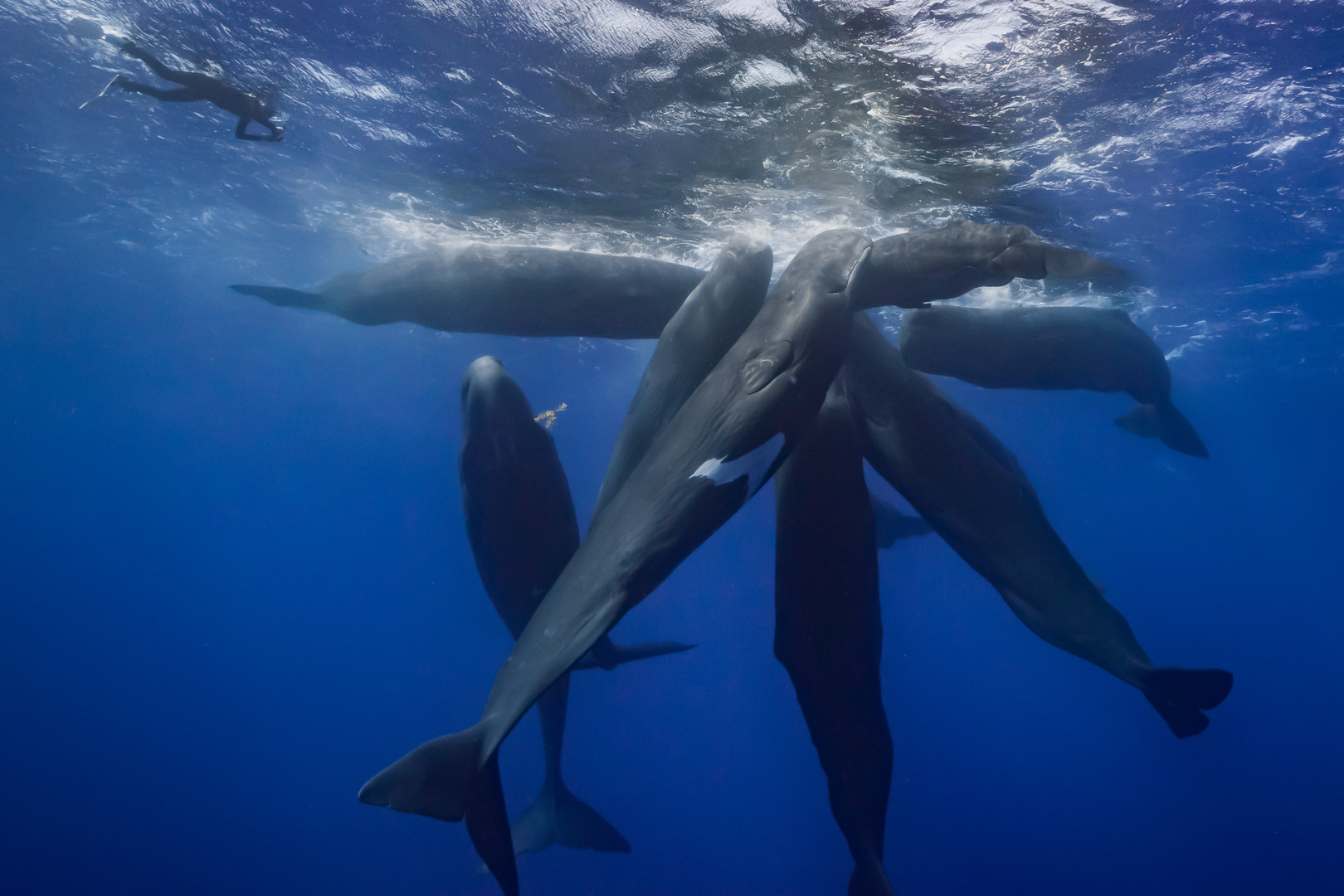
Q: Before being a Terra Mater producer you worked for many years with the world famous primatologist and environmentalist Jane Goodall, what was the experience like?
W.K: Jane is bigger than life, but bottom line she is also very funny and a great storyteller. I shared so many good times with her when I was at the Gombe Stream National Park in Tanzania studying chimps. It’s wonderful what she has achieved, especially as a woman in the sixties, who started out as a secretary in a film company. She had no formal education and was very open minded because she was not confined by any kind of scientific thinking. Jane changed the vision of Anthropomorphism. Usually it’s considered insulting to give human attributes to animals, but Jane reversed the stigma in finding the similarities between us and chimpanzees with her book In The Shadow Of Man. She observed love, jealousy, warfare, grief, friendship, handholding, kissing, and a variety of characteristics that humans and chimps share and that we should acknowledge.
Q: This is something that comes across also in Patrick And The Whale, which premiered at the Toronto Film Festival, and has gone around the festival circuit. It recently screened at the Innsbruck Nature Film Festival where it was the Opening Film and won the Grand Prize for Best Nature Documentary Award. As an Austrian how does it feel to have brought the film to your home country and receive this response?
W.K: It feels very good, I love the Innsbruck Nature Film Festival because it’ not an industry film festival. Here no one is coming to sell you an idea, you come to share the passion for environmental filmmaking. What happened in Innsbruck corresponded to my initial vision: people feeling a connection with this film to the point of asking for an extra screening. That’s the best thing ever because you make the film for the audience, and of course I’m also very happy the jury liked it and gave it the Grand Prize for Best Nature Documentary. It came as a total surprise, never in my wildest dreams I would have imagined it to win. The award for me was already that they put on a second screening and receiving also this prize is so overwhelming.

